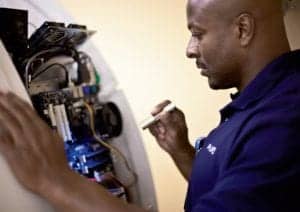Time to test the cables and pipes? Time Domain Reflectometers (TDRs) are handy test devices that make the acquaintance of all biomedical engineering departments sooner or later. But if a fancy, expensive TDR has no place in your organization’s budget, consider purchasing a less-expensive model with fewer options; renting; leasing; or buying a reliable, used model TDR.
 The ABCs of TDRs
The ABCs of TDRs
TDRs are used to find breaks, anomalies, or disturbances in cables. How do they work? The TDR sends a signal or pulse down a length of cable or wire pair in a link. The signal is reflected back to the TDR, and a clock within the instrument measures the amount of time in nanoseconds for the signal to return on the same wire pair. The TDR test can determine link length, and it can pinpoint any breaks or disturbances for the user. A good field tester will yield results expressed in distance from the tester, such as “Wire at pin 3 open at 178 feet.” A diagnostic message like this locates the problem, allows the user to inspect the identified location and fix it in the shortest possible time.
In the hospital environment, TDRs have several purposes: They can be used to verify newly installed cable or inspect cable that may have been damaged, for example. TDRs are also used for ongoing cable maintenance.
Hugo Draye, market segment manager for Fluke Networks (Everett, Washington), offers this typical scenario. If, during a remodeling project or installation, a contractor puts a screw through a cable, a TDR can be used to find the resulting break in the cable. A technician can go to that exact location, investigate the problem and fix the break. The TDR is used after that process to retest the cable. And on a good day, the result is a clean fix and a clear signal.
When TDRs first made their appearance, they were used to test coaxial cables. Coaxial cables required simple, straightforward connections and significantly less tinkering than today’s twisted-pair constructions. Twisted-pair construction consists of four wire pairs, with two wires twisted together in each pair. Such complex construction literally creates rampant opportunities for mistakes. A tech or installer can make mistakes or damage the twist rate. As a result the cable’s transmission capabilities are degraded.
To purchase the full text of this article, click here…




